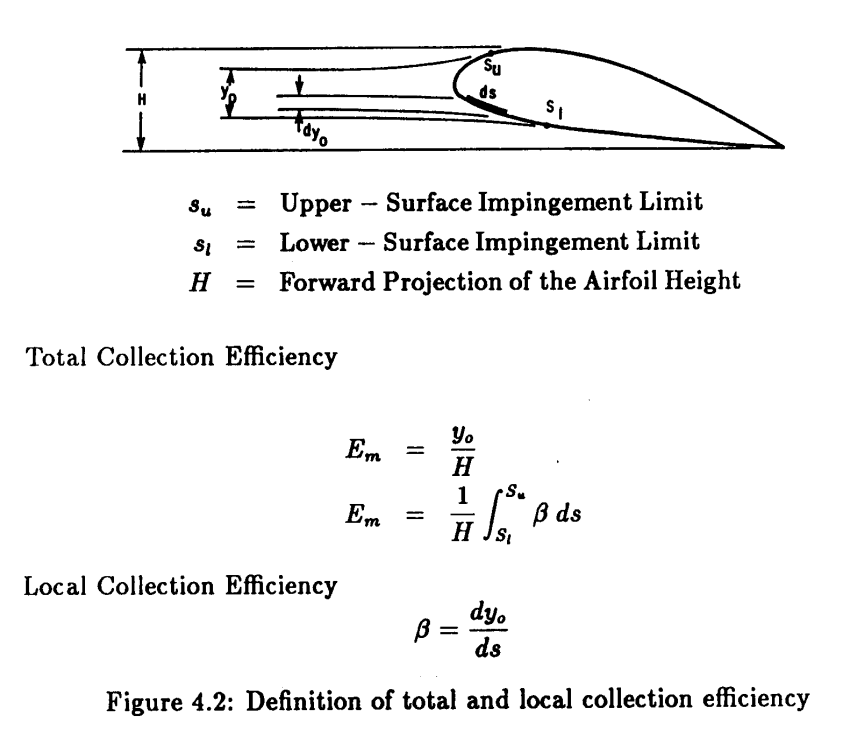
from Users Manual for the NASA Lewis Ice Accretion Prediction Code (LEWICE) (1990 version) ntrs.nasa.gov
Prerequisites
You need to complete the Aircraft Icing Handbook Water Catch Examples.
You need to select a computerized tool to work with. See Analysis Toolset for obtaining LEWICE, and some other options.
Aircraft Icing Handbook Example 2-2
read moreExample 2-2
This example illustrates the estimation of the impingement parameters E, β, h, Su and SL using graphical data (reference 2-12). The graphical data is all presented with Ko as the independent variable. Much data is available in this form.The conditions of Example 2-1 for a NACA 0012 airfoil are assumed: thus Ko = 0.05. It also is assumed for simplicity that the angle of attack, α, is 0 degrees. From figure 2-11, E, the total impingement efficiency, is estimated to be 0.23 for these conditions. So about 23 percent of the water in the …
